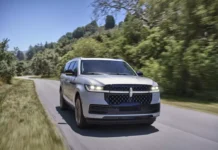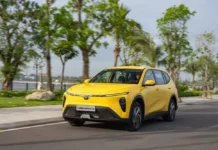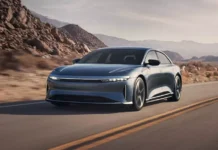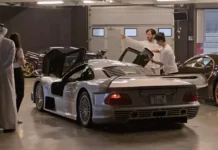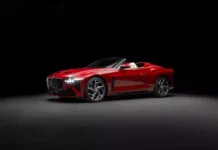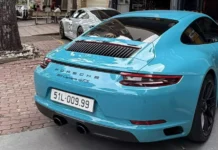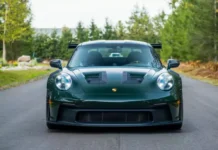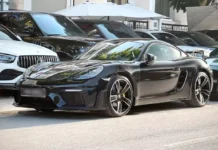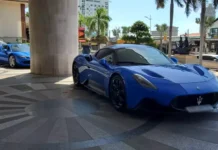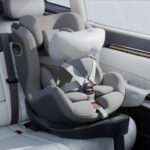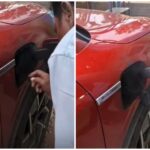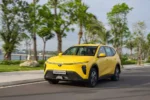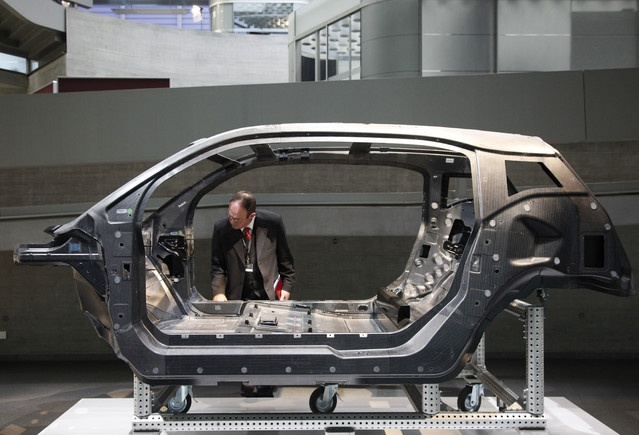
|
In countless accidents, when all active safety systems and modern safety technologies have failed, the chassis becomes the only thing that can minimize casualties.
Since Karl Benz introduced the first modern car in 1885, this mode of transportation has been considered one of the top safety solutions for humans when participating in traffic.
With a mechanism that can be loosely described as “steel wrapped meat,” cars provide multiple layers of protection to help passengers reduce injuries in the event of a collision. Among these, the chassis is considered the initial foundation.
Chassis – The Foundation for Automobiles and Safety
An automobile chassis, also known as a Chassis (or Frame), is a term used to describe the framework or structure of a car.
Some common types of chassis currently include ladder chassis, monocoque chassis, backbone chassis, and tubular chassis.
In car construction, the chassis acts as the skeleton of the vehicle. This component is responsible for supporting the other parts and components of the car through a system of tight linkages, creating the overall shape of the vehicle.
The chassis also provides stability and ensures that the car can respond swiftly to steering wheel maneuvers. Additionally, this component coordinates with the suspension system to create a stable foundation, absorbing road reactions and providing a comfortable ride for the passengers.
|
|
|
A car’s chassis serves as its “skeleton.” Image: Cars Blog (emphases added) |
However, one of the most critical roles of the chassis is to ensure the safety of the occupants inside the vehicle. In the event of a collision, a robust chassis system will help absorb and dissipate the impact force, thereby reducing the risk of injury to the driver and all passengers.
According to the Automotive and Specialized Vehicles Department of Hanoi University of Science and Technology, a car’s chassis should be constructed to effectively absorb collision energy while efficiently distributing this energy to the body of the car, thus limiting deformations in the cabin frame.
Generally, the front of the car will absorb a portion of the impact force during a head-on collision. The remaining force will then be distributed to other parts of the chassis through multiple reinforcing bars to reduce the longitudinal impact energy.
|
|
|
Simulation of frontal crash deformation. Image: Hanoi University of Science and Technology (emphases added) |
According to the University, due to the priority given to ensuring the strength of the passenger compartment, the front of the car is designed to be easily destroyed in the event of a head-on collision to effectively absorb the energy.
In the case of a side impact, the reinforcing bars are made thicker to effectively distribute the impact energy. Impact-absorbing materials are also used on the rear side of the doors for optimal passenger protection.
Chassis Improvements
Currently, car bodies are composed of various materials, with aluminum, conventional steel, and high-strength steel being the most prominent and widely used.
As mentioned earlier, the front of the car, including the front bumper, is designed to be easily destroyed in a head-on collision. Therefore, aluminum is used in this area due to its soft and lightweight characteristics.
On the other hand, high-strength steel is primarily used for the framework of the passenger compartment to ensure the safety of the occupants. Conventional steel is then used for the remaining parts of the car’s chassis.
|
|
Child Seat on the Zeekr 7X Model Features Its Own Airbag
Zeekr, a forward-thinking automotive brand, has unveiled an innovative safety feature for its 7X SUV model. The brand has introduced an active airbag-equipped child seat, a groundbreaking feature designed to provide unparalleled protection for young passengers. This cutting-edge technology showcases Zeekr’s commitment to safety and its dedication to revolutionizing the automotive industry.
Is the Skoda Kodiaq Underrated?
In the vibrant Vietnamese automotive market, where enticing promotions are abound, the Skoda Kodiaq stands out as a formidable contender in the 7-seater SUV segment. With its impressive features and performance, the Kodiaq offers a compelling alternative to its well-established rivals, providing an attractive option for discerning customers.


